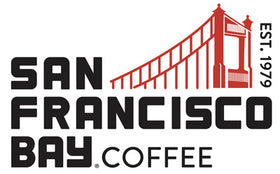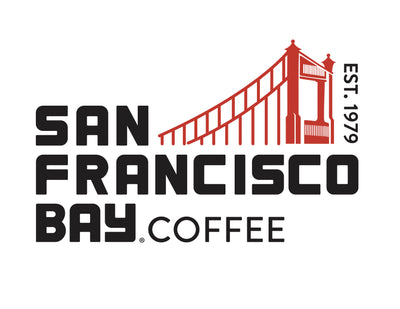Enhancing Your Decaf Coffee: Expert Brewing Tips & Flavor Hacks

The world of decaf coffee has evolved dramatically from the days of bland, one-dimensional brews. Today's decaf coffee offers rich complexity and satisfying flavor profiles that rival their caffeinated counterparts. Whether you’re avoiding caffeine for health reasons, enjoying an evening cup, or simply prefer the taste without the buzz, understanding how to maximize your decaf coffee experience can transform your daily ritual from ordinary to extraordinary.
Understanding Decaf Coffee and Its Process
Decaf coffee undergoes a fascinating transformation that removes 97-99.9% of its original caffeine content while preserving the complex flavors we love. Decaffeination typically occurs before roasting, using methods like the Swiss Water Process, CO2 extraction, or solvent-based techniques. At San Francisco Bay Coffee, we use the environmentally friendly Swiss Water Process, which removes 99.9% of caffeine while maintaining the coffee's natural flavors and beneficial compounds.
According to recent scientific research, decaffeination affects more than just caffeine levels. Studies show that, along with caffeine, some aroma precursors are also removed during processing, including approximately 60% of the sucrose content in Arabica beans and 16% of chlorogenic acids. These compounds are crucial for developing the roasted, nutty, and chocolate notes we associate with great coffee. Understanding this science helps explain why proper brewing techniques become even more critical for decaf coffee.
The timing of decaffeination also impacts the final product. Since the process occurs on green beans before roasting, it can affect how they respond to heat during roasting, potentially requiring adjustments to achieve optimal flavor development.
Does Decaf Coffee Taste Different?

Quality decaf coffee doesn't have to taste different from regular coffee, though the decaffeination process creates measurable chemical changes. These molecular differences largely depend on the processing method and the quality of your coffee bean.
Scientific analysis reveals that decaf coffee typically contains fewer pyrazines, the compounds responsible for nutty, roasted, and chocolate flavor notes. Research published in peer-reviewed studies shows that regular coffee samples presented significantly higher pyrazine levels than their decaffeinated counterparts. At the chemical level, this reduction occurs because approximately 60% of the sucrose, pyrazines' precursor compound, is removed during decaffeination.
However, decaf coffee often exhibits higher concentrations of other flavor compounds. Studies indicate increased levels of furans, acids, and certain aldehydes in decaffeinated samples, which have the potential to contribute spice, caramel, maple, and fruity notes. These chemical compounds can create an equally compelling flavor experience when extracted adequately through optimal brewing methods.
The perception that decaf coffee tastes inferior typically stems from poorly processed beans or suboptimal brewing techniques rather than inherent flaws in decaffeination itself. Premium decaf coffee processed using the Swiss Water Process can deliver exceptional flavor complexity that rivals regular coffee when properly sourced and brewed. The key is understanding these chemical differences and adjusting your brewing approach accordingly.
Elevating Your Decaf Coffee
The ritual of preparing your coffee does not need to be diminished if you are using decaf coffee. Here are some tips to improve the quality of your cup of unleaded goodness.
Choose Premium Quality Beans
Start with high-quality decaf beans that use superior decaffeination methods. Look for beans processed using the Swiss Water Process or CO2 extraction, which preserve more of the coffee's natural flavors than chemical solvent methods. Single-origin decaf coffees often provide more distinctive flavor profiles than blends, allowing you to experience the unique characteristics of specific growing regions.
Master Your Brewing Parameters
 Decaf coffee requires slightly different brewing parameters than regular coffee to achieve optimal extraction. Use water heated to 195-205°F—the same temperature range as regular coffee, but pay closer attention to timing. Since decaf beans may extract differently due to their processing, experiment with slightly longer brew times for pour-over methods or adjust your grind size to compensate for the altered bean structure.
Decaf coffee requires slightly different brewing parameters than regular coffee to achieve optimal extraction. Use water heated to 195-205°F—the same temperature range as regular coffee, but pay closer attention to timing. Since decaf beans may extract differently due to their processing, experiment with slightly longer brew times for pour-over methods or adjust your grind size to compensate for the altered bean structure.
For pour-over brewing, try a slightly finer grind than you'd use for regular coffee, as this can help extract more of the available flavor compounds. French press enthusiasts should consider extending the steeping time by 30-60 seconds to allow for fuller extraction of the altered flavor compounds.
Optimize Your Coffee-to-Water Ratio

For most brewing methods, use a coffee-to-water ratio of 1:15 to 1:17, potentially leaning toward the stronger end of this range. The reduced concentration of certain flavor compounds in decaf coffee means you may need a slightly higher ratio to achieve the same flavor intensity as regular coffee.
Implement Flavor-Boosting Techniques
Natural flavor enhancement can elevate your decaf experience without compromising the coffee's integrity. Add a pinch of high-quality sea salt to your grounds before brewing—this can enhance sweetness and reduce perceived bitterness. Cinnamon, cardamom, or a small piece of orange zest mixed with your grounds can complement the existing flavor profile while adding aromatic complexity.
For those who enjoy flavored coffee, add pure vanilla extract or almond extract to your brewed coffee rather than the grounds. This prevents the delicate compounds from breaking down during the brewing process. A teaspoon of unsweetened cocoa powder mixed with your grounds can enhance chocolate notes that may be diminished in decaffeination.
Focus on Freshness and Storage

Decaf coffee can be more sensitive to staleness than regular coffee due to its altered cellular structure from processing. Purchase whole bean decaf and grind just before brewing. Store your beans in an airtight container away from light, heat, and moisture. Use within 2-4 weeks of the roast date for optimal flavor.
According to coffee science research, proper storage becomes even more critical for decaf coffee as the altered bean structure can lead to faster flavor degradation if not properly protected.
Experiment with Brewing Methods
![]()
Different brewing methods can highlight various aspects of decaf coffee's unique flavor profile. Cold brew emphasizes the smoother, less acidic characteristics while minimizing perceived thinness. Espresso preparation can concentrate the available flavors, creating a more intense experience. Pour-over methods allow for precise control over extraction variables, letting you fine-tune the brewing process to maximize flavor development.
Key Points Summary:
-
Decaf coffee undergoes chemical changes during processing that affect flavor compounds
-
Quality decaffeination methods like Swiss Water Process preserve more natural flavors
-
Proper brewing parameters and techniques can maximize flavor extraction
-
Natural flavor enhancement techniques can elevate the decaf experience
-
Freshness and proper storage are crucial for maintaining decaf coffee quality
Experience the Decaf Coffee Difference with San Francisco Bay Coffee
Ready to discover what exceptional decaf coffee can taste like? Our Swiss Water Process decaf coffees preserve 99.9% of the natural flavors while removing 99.9% of the caffeine, creating a smooth, rich experience that challenges preconceptions about decaf coffee.
What's your biggest challenge when brewing decaf coffee at home? Have you noticed specific flavors you'd like to enhance or diminish in your decaf routine? We'd love to help you optimize your brewing process. Contact our coffee experts for personalized brewing advice and recommendations tailored to your taste preferences.



